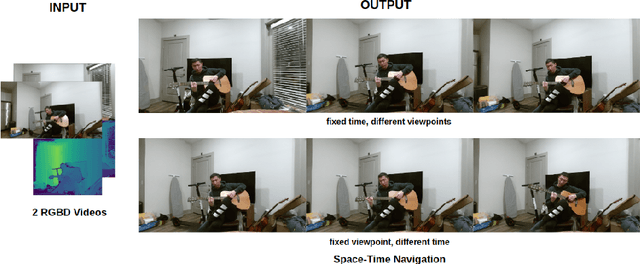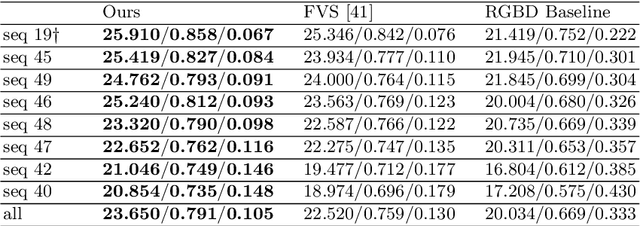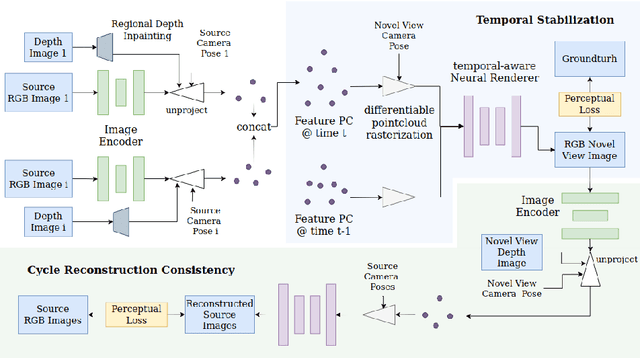YoungJoong Kwon
Bringing Telepresence to Every Desk
Apr 03, 2023



Abstract:In this paper, we work to bring telepresence to every desktop. Unlike commercial systems, personal 3D video conferencing systems must render high-quality videos while remaining financially and computationally viable for the average consumer. To this end, we introduce a capturing and rendering system that only requires 4 consumer-grade RGBD cameras and synthesizes high-quality free-viewpoint videos of users as well as their environments. Experimental results show that our system renders high-quality free-viewpoint videos without using object templates or heavy pre-processing. While not real-time, our system is fast and does not require per-video optimizations. Moreover, our system is robust to complex hand gestures and clothing, and it can generalize to new users. This work provides a strong basis for further optimization, and it will help bring telepresence to every desk in the near future. The code and dataset will be made available on our website https://mcmvmc.github.io/PersonalTelepresence/.
Learning Dynamic View Synthesis With Few RGBD Cameras
Apr 22, 2022



Abstract:There have been significant advancements in dynamic novel view synthesis in recent years. However, current deep learning models often require (1) prior models (e.g., SMPL human models), (2) heavy pre-processing, or (3) per-scene optimization. We propose to utilize RGBD cameras to remove these limitations and synthesize free-viewpoint videos of dynamic indoor scenes. We generate feature point clouds from RGBD frames and then render them into free-viewpoint videos via a neural renderer. However, the inaccurate, unstable, and incomplete depth measurements induce severe distortions, flickering, and ghosting artifacts. We enforce spatial-temporal consistency via the proposed Cycle Reconstruction Consistency and Temporal Stabilization module to reduce these artifacts. We introduce a simple Regional Depth-Inpainting module that adaptively inpaints missing depth values to render complete novel views. Additionally, we present a Human-Things Interactions dataset to validate our approach and facilitate future research. The dataset consists of 43 multi-view RGBD video sequences of everyday activities, capturing complex interactions between human subjects and their surroundings. Experiments on the HTI dataset show that our method outperforms the baseline per-frame image fidelity and spatial-temporal consistency. We will release our code, and the dataset on the website soon.
 Add to Chrome
Add to Chrome Add to Firefox
Add to Firefox Add to Edge
Add to Edge